
- For 4-10 Players
- 30 minute playing time
- Ages 8 and up

- For 6- 20+ people
- 30 Minutes to Play
- Ages 8+
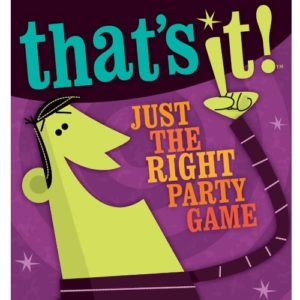
- For 3 or more players
- Playing time 15 minutes
- Ages 10 and up
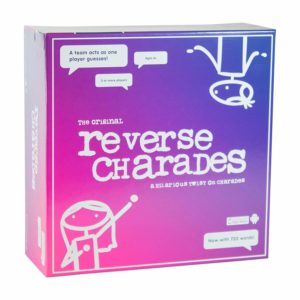
- For 3 or more players
- 500 Words & Phrases
- Ages 6 and up
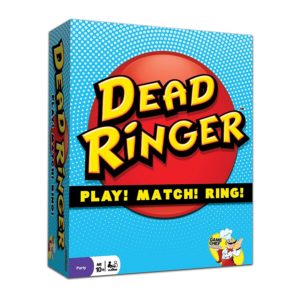
- For 4 or more players
- Play in 20-25 minutes
- Ages 10 and up
Choose the Best Board Game for 8 Players
Customer’s Choice: the Best Rated Board Games for 8 Players
16 users answered this survey. Please help us improve this review!
Parties are meant to be fun, and the best board games for large groups foster a cooperative environment that encourages all players to work together toward success. These party board games allow people of different ages and abilities to play at their own pace while still having a great time with friends and family. If you’re looking for some new activities or ways to break out of your routine, consider trying one of these eight-player games this weekend.
Games are a fun way to spend time with friends, family and coworkers. The best board games for 8 players can be difficult to find. To help you out, experts have put together a list of the top 5 board games for 8 players. Experts also included product reviews and tips on each game so that you’ll know what type of experience your guests will have while playing!
Table of Contents
Spontuneous The Song Game – the Editor’s choice!
 Spontuneous is a game where you just happen to have the same song in your head with your friends. The only goal? Figuring out what it is and shouting it before your opponents can! Played around the table, each player will take turns naming as many songs as they can think of that have at least one word in common as their current “Spontuneous”.
Spontuneous is a game where you just happen to have the same song in your head with your friends. The only goal? Figuring out what it is and shouting it before your opponents can! Played around the table, each player will take turns naming as many songs as they can think of that have at least one word in common as their current “Spontuneous”.
There’s no limit on how crazy this game gets – someone could start off singing Stevie Wonder’s “Isn’t She Lovely” and get help from someone who shouts out Madonna’s “Like A Prayer”. It only takes 3 rounds for everyone to be totally immersed, doubly so if there are more than 8 people playing.
Spontuneous is the perfect game for people who are looking for a quick and easy, yet funny time with friends and family. The rules make it easy to learn and you’ll know them in under 10 minutes! You can take this great party game anywhere and create an intimate sing-a-along everywhere you go.
Rollick Party Charades – the best for team-building gameplay!
 Rollick party charades is a fast and furious team charades competition. Each team needs to collaborate together without saying a word as they race around the game board. The different skills required for this exhilarating game also make Rollick an excellent brain exercise with benefits like improved finger dexterity and enhanced spatial awareness.
Rollick party charades is a fast and furious team charades competition. Each team needs to collaborate together without saying a word as they race around the game board. The different skills required for this exhilarating game also make Rollick an excellent brain exercise with benefits like improved finger dexterity and enhanced spatial awareness.
Rollick is simple enough for kids as young as 13 years old to compete, but challenging enough that adults will have fun too. It can be combined with other games like Jenga or Connect 4 to create an unforgettable night of family fun.
Rollick is a hilariously funny, fast-paced game that brings the old-fashioned game of charades into the 21st century. Teams compete to see which can give cues so quickly and creatively without using any words at all!
That’s It! Just The Right Party Game – the best for vocabulary development!
 That’s It! Just The Right Party Game is the party game that everyone can get their heads around. This easy-to-play, zany and fun game rewards creativity and imagination for 3 or more players 10 years of age or older.
That’s It! Just The Right Party Game is the party game that everyone can get their heads around. This easy-to-play, zany and fun game rewards creativity and imagination for 3 or more players 10 years of age or older.
With 200 colorfully illustrated cards that teach vocabulary, reinforce language development and encourage after play discussion on a variety of topics, this just might be the most perfect addition to your next gathering.
That’s It! Just The Right Party Game is the perfect novelty game for adults and kids alike. This is a great way to both have fun with others while also improving your vocabulary.
The Original Reverse Charades – the best for any age!
 The Original Reverse Charades is a hilariously fun party game with a twist. Rather than one player guessing what the other players are acting out, try to act out a word that the team has to guess! As long as there are six or more players, they can be on one team together and take turns acting things out for their teammates.
The Original Reverse Charades is a hilariously fun party game with a twist. Rather than one player guessing what the other players are acting out, try to act out a word that the team has to guess! As long as there are six or more players, they can be on one team together and take turns acting things out for their teammates.
This game is suitable for those ages 6+, so invite your kids over for some family gaming night playtime with Reverse Charades. The goal of this innovative party game is to work together as a team and collaborate creatively in an effort to discover what everyone else wants you’re trying to act on!
Are you tired of the same old charades? Tap into your creativity with Reverse Charades. Reverse Charades is a fast-paced, fun game with twists and turns for both players and audience members alike!
uDog Board Game – the best for beginners!
 The uDog Board Game is the new way to play an old classic! It’s easy enough for beginners. With two levels of difficulty, this game accommodates families with different gaming abilities. Best of all, it’s a cooperative and competitive experience so family members across generations can have fun playing together.
The uDog Board Game is the new way to play an old classic! It’s easy enough for beginners. With two levels of difficulty, this game accommodates families with different gaming abilities. Best of all, it’s a cooperative and competitive experience so family members across generations can have fun playing together.
This game is a blast from your past with uDog Board Game. With 8 puzzle pieces that can be reconfigured to match the number of players, this game for kids and adults alike will keep things lively and fun! Combine tactics like cooperation, competition, spatial reasoning skills, or take advantage of unique boards like bridges over waterways where one player must play cooperatively with another so as not to be out in the cold.
If you’re looking for a fun, easy game to play with the family that doesn’t require much skill but still offers diverse strategic options, look no further than uDog!
The Buyer’s Guide
Board game types for 8 players:
1) Abstract
These are one of the oldest types of games. The goal is to find a way to gather points and defeat an opponent by strategically moving pieces in various ways. Most abstract board games are two player and do not have a theme connected with them, as opposed to war games or card games.
Here are some examples of abstract board games:
- Go – players take turns placing stones trying to surround a larger portion of the board than their opponent. There are 19×19 lines on the go game board, which means there are 361 intersections where the stones can be placed. At first glance it may seem that it would be impossible for either player to remember all these possibilities, but in practice it does get easier once you learn the game;
- Hex is played on a honeycomb-shaped board with hexagon cells. Each player has twelve pieces (as in checkers) and starts with three in each of the six colors. The object of the game is to have all your colored pieces connected across the hexagonal space as an unbroken chain, while preventing your opponent from doing so by keeping them surrounded on at least two sides;
2) Area control
Area control board games divide the game space into areas and give players control over some of those areas. These board games are to take control over as much area on the game board as possible by occupying it with your pieces or blocks (tokens). Most of them have been designed for 2-4 players but there are also many one-player versions out there.
Here’s how you would classify popular board games from their type:
- Checkers – area control with no luck involved but reduced number of choices at every move thus making it a more primitive form of chess without any deep strategies or planning required. Same as in case with Stratego, only skill determines outcome in case of Checkers;
- Risk – the player who gains the most territories wins the game regardless of their value. Here, you have no choice but to conquer everything on the map in order to win against your opponent(s). This is where your strategy begins since risk can be won without achieving much or it might even require losing some battles, especially when facing other players at higher level;
3) Campaign/legacy board games
These board games use permanence in the game state to create an evolving narrative. Campaign/legacy games are very different from other traditional board games (with a few exceptions). These types of games use permanent changes to the game state or “destroy and replace” components as integral parts of the gameplay. In some cases, doing so allows these games to tell more complex stories than would be possible in two hours using a traditional board game format.
Some campaign/legacy board games include:
- Summoner Wars has cards which can be permanently destroyed in order to gain a new ability for future plays of that card (the card is returned into your deck). But these cards never leave your deck so an individual copy of a card does not persist through multiple games and would thus fail our criteria for what constitutes a campaign/legacy game;
- Scythe has a clear example of using permanence to create a narrative. The board state is persistent: destroyed units are removed from play and upgraded components stay with the player throughout the campaign;
4) Deckbuilder
Deckbuilders can be considered an extension to Collectible Card Games. In CCGs you just buy randomized cards and construct your deck in-between games. During a game the deck is hidden, but when building it again you have many choices of what to include and what not to include.
In deckbuilders this mechanic itself is also turned around. When constructing your deck from scratch, you don’t know what cards are available to build with and you don’t know which cards are left either. You only receive the cards you buy or gain during the game.
The examples:
- Dominion is one of the standard-bearers of modern deckbuilders. In Dominion, you start with a basic “hand” of cards that are all either money or victory points, and play them in order to gain more cards from the central supply. You can buy action cards that give you various abilities, and those provide you with currency so you can buy stuff that is more expensive later on. At game’s end whoever has accumulated the most victory points wins;
- Ascension is another deckbuilder, and though it has many similarities with Dominion‘s mechanics, Ascension does a lot of things differently. There’s no “discard pile” in this game – instead your action cards accumulate enchantments (and thus points) on them as they’re played. At any point, you can cash those in to get their power. Furthermore there are several stacks of cards in the game that benefit from accumulation, like monsters that need to be defeated or heroes that give you victory points for sleeping near them at night after having enough adventures in your day-time. Cards have different value, so you always have to look at what is currently available;
5) Party board games
They are typically light and informal, with simple rules. Many party board games are adaptations of traditional parlor games (e.g., the previously-mentioned card game bridge).
The examples:
- Apples to Apples is a party game in which players are dealt cards with nouns on them, and have to lay a card that represents the best “match” for the current player’s chosen card;
- Codenames is a game where one player plays as spymaster, giving clues about words assigned to his team members; if they guess all their words before their opponents do, they win;
How to Make a Board Game Party More Fun?
Making a board game party fun is not hard to do. Today, with the advance of technology, playing board games online is fast becoming popular. But it does not offer anything close to what you can get from a real board game party environment where everyone can freely interact with each other in person.
If you are planning a birthday or a simple gathering of friends who enjoy playing board games together, consider giving them this list of tips on how to make their experience truly memorable and worth talking about:
- Appoint someone as the event planner. The very first thing that you should do before planning any kind of an event, whether it’s small or big, is to appoint someone who will take and will ensure that everything goes according to the plan. It may be you or anyone of you buddies who can easily handle most of the responsibilities regarding the party, and make sure that there are no shortcomings on their part when it comes to coordination and management;
- The perfect place. Make sure that everyone agrees on where they will play their board game. Some people prefer playing games indoors while others would want to do it outdoors like in a park or even at some cafe. If possible, try asking everyone if they have specific preferences so you can come up with a decision that is not biased by anyone;
- A proper date and time. Usually, places like cafes allow “all day” reservations as long as there are available slots for customers who wish to use any of their facilities. However, if you are planning to have the party at one of your buddies’ houses, then make sure that everything is set up and ready to accommodate everyone on time;
- Provisions. When having a board game party, it is ideal to supply all the participants with food and drinks so they can freely eat or drink whenever they feel like it. This will make them more comfortable and relaxed as compared to when playing at home where they may not be able to get anything during the middle of the game. You should also provide enough utensils (plates, forks, knives etc.) and other things that anyone may need while enjoying their favorite board games;
- Try to come up with a list of board games that everyone can play. You can start with the traditional Monopoly, Chess, and Checkers that have been considered popular classic board games. Aside from these three, you can add also other board games for variety’s sake;
- Who plays first? This is actually a big question now especially since many of today’s kids do not really care much about playing board games anymore. But if you happen to be in a situation where someone among your friends has an unruly kid who refuses to follow rules or does not want to adhere to basic courtesy when it comes to sharing and taking turns, then just let him or her forfeit the game. After all, the point of organizing this party is not for them but for the adults anyway;
- Game rules. First of all, it’s not a good idea to force anyone to follow certain rules when playing board games . If there are only a couple or so people who wish to play, then just let them do that in any way they like. However if there are many players involved, you should make everyone follow the same set of specific rules so no one feels left out or neglected during the course of the game;
Team vs. individual gameplay
The vast majority of board games are divided into 2 groups: team vs. individual (abbreviated as TI). The distinction is mostly made in terms of whether the players’ performance is measured individually or by how well their team does collectively. It’s very important to note that it doesn’t always have to be exactly two teams against each other. Though some games allow more than 2 alliances to face off against one another simultaneously, for instance.
TI board games can also be further subdivided into two subcategories: cooperative and competitive. In a cooperative game , players work together towards a common goal – while they may compete with each other over scarce resources along the way, if they don’t reach the goal at all, everyone loses together.
In a competitive game, players are primarily (or completely) in opposition with one another – the only way to win is for someone else to lose. A cooperative game can be turned into a competitive one by changing some of the victory conditions, and vice versa.
Competitive games are typically deemed more “hardcore” than cooperative ones. They are also much easier to design as you don’t have to worry about balance issues with regards to potentially powerful alliances.
Cooperative games tend to be a lot more popular with casual players and families – which is not at all surprising when you realize that most of them can be played with little kids without any major concern for complex mechanics or hidden information.
FAQ
What is a cooperative game?
A cooperative board game is a type of board game in which players cooperate to beat the game rather than compete against each other.
Typically, cooperative board games feature a series of scenarios in which the players have to complete certain tasks or solve puzzles within the rules of the game. Because no player can win alone, players either work together or are assigned specific “roles” that give them different abilities. These roles and abilities will be necessary for completing certain challenges to proceed through the scenario; if one player fails at their given task, everybody essentially fails since there is usually only one winner per game.
Cooperative board games require communication and coordination between all players to beat each challenge successfully. If they don’t communicate with each other though (about what role should do which part), it’s likely that they won’t beat most of these scenarios – victory is not possible without communication.
Can you play a board game with more than the recommended number of players?
Yes. Most games make this possible by offering variant rules for a different number of players. These often expand upon the original rules, adding new roles or changing up some of the mechanics. These variants are designed to be balanced – after all, you don’t want two more players to mess up an entire game! However, if you are looking for a few extra people to join in on your next game night and happen to have a handful of friends over. Feel free to try out any variant that strikes your fancy!
How do you play the game Spontuneous?
Spontuneous is a card and dice game with two decks of cards. One deck has title words for song titles, while the other contains topics that might inspire the creation of new songs. Players begin by rolling the die then take turns drawing either a music-based or topic card from either deck (you could play with one deck if you want).
Once both players have drawn five cards from their respective decks, they simultaneously create lyrics to fit each card’s title word or topic using whatever method they choose. Both players share a common goal: to get as many “hits” (title words or topics) as possible in their improvised verse! When a player misses on his turn, he loses all points he had earned so far. The one with the most points wins!
What is the Spontuneous challenge?
Spontuneous is a game of musical improv that you can play along with your friends, party people or at random encounters. Each player takes turns being the judge (the one who picks a tune) and it’s up to the other players to come up with lyrics for whatever the judge chooses.
How to play a Rollick board game?
First, gather a group of friends (the more the merrier). Rollick games are designed for 2-6 people but they play great with bigger groups as well.
Each player should select one character sheet and place it in front of them with the special “Player” side face up. Each character sheet has two sides.
After all players have selected their characters, you may now shuffle the Adventure cards and distribute four to each player as per your preference.
The youngest player starts first. He/she takes any card from their hand that matches the color/symbol on top of the Adventure deck and plays it face down on top of one of the spaces on the game board.
All players will take their turn in clockwise order until a player completes a task (plays an Adventure card that matches the symbol/color of the space where they are currently located). If you cannot play any cards from your hand, then you must move one space or pass. Once you complete a task, move your character token to a different location on the game board and end your turn by drawing two new Adventure cards from the deck.
Each Adventure card requires a certain skill level to complete successfully (i.e., Cunning 5). If you have enough Strength points for an Adventure but lack Cunning points, then those same Strength points are used as Cunning points for this attempt. Likewise, if you are lacking Cunning points and have enough Strength points, then your character will automatically complete the Adventure (no need to roll the dice).
How do you play the game “That’s it?”
The game is played in teams. In a weird twist, the same player can represent different teams in 2-team games. The goal of That’s it? is to be the first team with no cards remaining in hand.
Each turn, a player draws from the draw pile and follows the instructions on that card. All players should pay close attention to what happens next. If you are caught daydreaming or otherwise not paying attention, your whole team loses! As soon as you get rid of all your cards, simply call out “That’s it!”
Other players who have also gotten rid of all their cards should immediately celebrate with high fives and cheers too! Then everyone flips over their final card at the same time for some exciting “I won!” or “I lost!” moments.
What is the Reverse Charades game?
The Reverse Charades board game is a perfect charades word game for friends and family, played with 3 to 6 people.
If you like charades party games , then you’ll love Reverse Charades because of its unique twist – how can your teammates guess the word on your card before time runs out if they can’t talk? You may find yourself doing impressions, sound effects, mime, gestures, charades and eventually making a sound or saying some of the words.
If you like Pictionary, you’ll love Reverse Charades because your teammates can’t talk but have to guess what you’re trying to act out before time runs out!
How do you play the game Reverse Charades?
Each player picks a card from the deck they think their teammates will guess correctly, using just 1 word and body gestures, without speaking or making sounds. Once the chosen card is returned to the draw pile if it’s incognito (face down), each team takes turns acting out his or her cards for 1 minute until someone guesses.
What is the most boring board game for 8 players?
It’s probably Monopoly. The rules are convoluted and hard to explain, it takes forever, there’s too much luck of the draw (rather than real strategy), and you have to keep track of so many different things that even the most brilliant player can get bogged down in minutiae. If your family or friends don’t want to play chess or Scrabble, try Settlers of Catan instead — it has a similar game mechanic but with more choices and less time investment.
8 players is a large team. All participants of such a group, especially, if it is a family of members of different ages and with various interests, may argue about the choice of a board game. To save you from such a headache, I’ve gathered a few tips and picks so you could play a good title without fighting with other members during family gaming night. Make sure to leave your comments with your favorite board games for large teams of players.
How would I pick a board game for 8 players?
The rules in games for large teams should be simple and clear. Check the manufacturer’s label on the cardboard – it must have enough details for 8 players. This genre requires participants to display different skills – improvisation, logic, pantomime.
I would also recommend picking the games where the participants have to explain the words in silence, without gestures and mimes, using transparent maps.
Keep in mind that tabletop games with complex rules and a tangled plot require hours of free time to be invested. You become a participant in a simulated situation that requires you to make serious tactical decisions. Become the head of the country, send an army to war, save the world from diseases. Such games will do for the teams of adults who are into geek activities rather than party titles.
Top 5 best board games for 8 players and more:
- Spontuneous is a classic title for 4-10 teammates. Each session lasts about 30 minutes, so everyone can participate. It is great for the participants aged over 8 years;
- Rollick! is another 30-session game for the team of 6-20 people aged over 8 years;
- Thats It! offers the average playing time of 15 minutes. The average age of players must be over 10 years old;
- Reverse Charades are a great pick if your team mostly consists of strangers aged over 10 years old. It includes over 500 phrases to guess;
- Dead Ringer is another awesome game for 4 or more players aged over 10 years old. Each gaming session lasts about 25 minutes;
If you have the questions about where to buy or how to play all these board games for 8 players, please feel free to write below this review. I check and answer all the requests. Also, you can subscribe to Jenga-Game.Com to get the notifications about the new posts!
Video Tutorial: How To Play – Spot It!
Final thoughts
When you’re planning a family gathering, holiday dinner party or any other type of get-together with 8 people in attendance, it’s important to have the right board game for everyone. The games on this list are all fun and engaging so that your guests will feel like they can really enjoy themselves while playing!




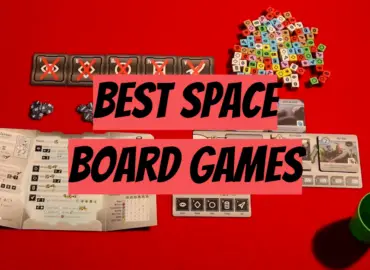

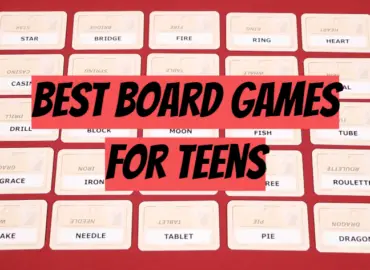
Lovely tutorial I must say. Board games for 8 players is so scarse these day, and I can only imagine how hard it is to get right at the same place.